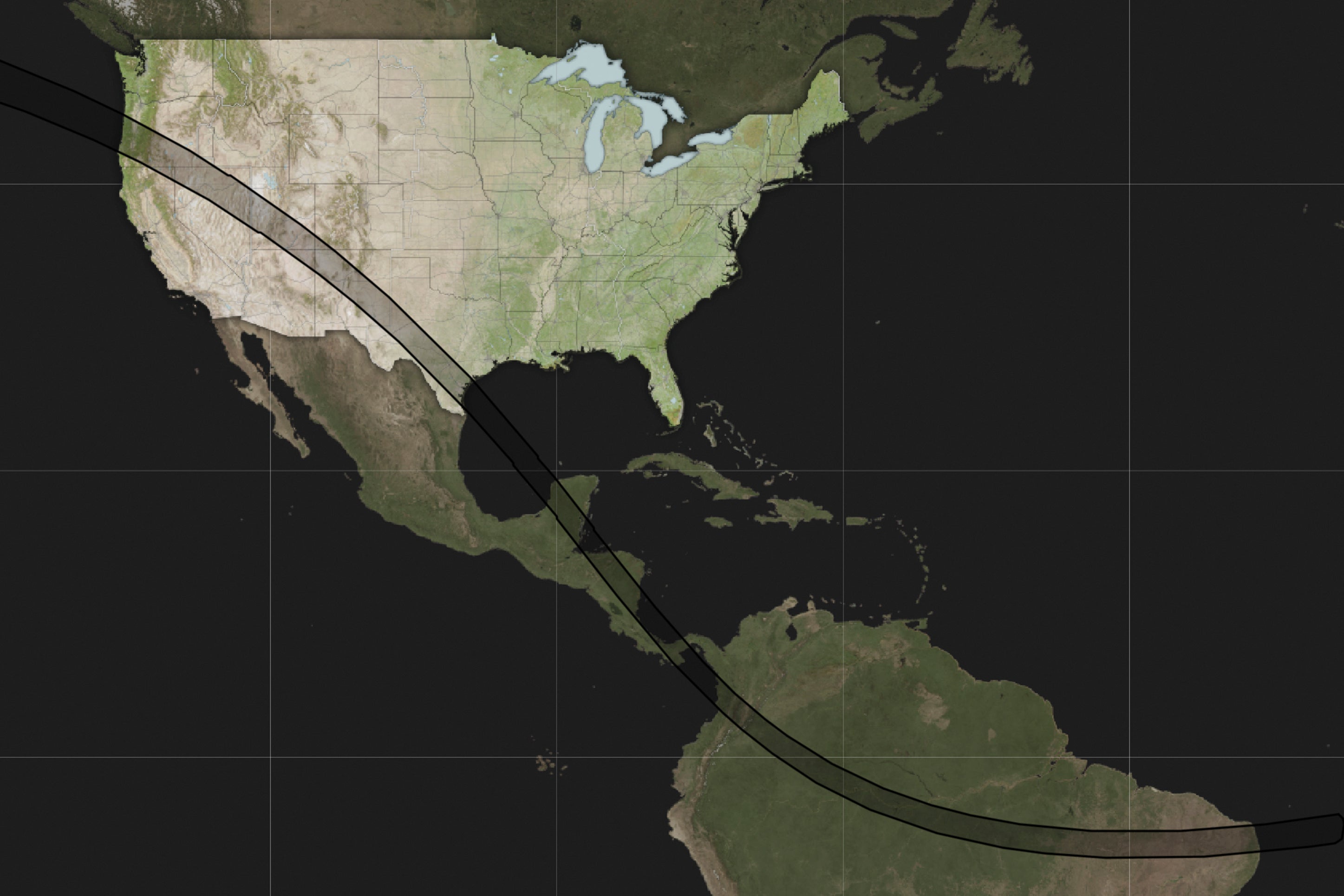'Ring of fire' solar eclipse will cut across the Americas, stretching from Oregon to Brazil
A rare “ring of fire” eclipse of the sun is about to cut across the Americas, from Oregon to Brazil

Your support helps us to tell the story
From reproductive rights to climate change to Big Tech, The Independent is on the ground when the story is developing. Whether it's investigating the financials of Elon Musk's pro-Trump PAC or producing our latest documentary, 'The A Word', which shines a light on the American women fighting for reproductive rights, we know how important it is to parse out the facts from the messaging.
At such a critical moment in US history, we need reporters on the ground. Your donation allows us to keep sending journalists to speak to both sides of the story.
The Independent is trusted by Americans across the entire political spectrum. And unlike many other quality news outlets, we choose not to lock Americans out of our reporting and analysis with paywalls. We believe quality journalism should be available to everyone, paid for by those who can afford it.
Your support makes all the difference.A rare “ring of fire” eclipse of the sun cuts across the Americas on Saturday, stretching from Oregon to Brazil.
For the small towns and cities along its narrow path, there was a mix of excitement, worries about the weather and concerns they'd be overwhelmed by visitors flocking to see the celestial event, also called an annular solar eclipse.
Unlike a total solar eclipse, the moon doesn’t completely cover the sun during a ring of fire eclipse. When the moon lines up between Earth and the sun, it leaves a bright, blazing border.
Saturday’s path: Oregon, Nevada, Utah, New Mexico and Texas in the U.S., with a sliver of California, Arizona and Colorado. Next: Mexico’s Yucatan Peninsula, Belize, Honduras, Nicaragua, Costa Rica, Panama, Colombia and Brazil. Much of the rest of the Western Hemisphere gets a partial eclipse.
Viewing all depends on clear skies — part of the U.S. path could see clouds. NASA and other groups planned to livestream it.
With a chance of rain in its forecast, the small town of Reedsport near Oregon's Pacific Coast moved its eclipse festival inside so that a bounce house and games wouldn’t get soaked in the mud.
"But we’re still hoping that we might get a glimpse of it,” said city official Rosa Solano.
Weather was less of a concern in tiny Baker, Nevada, where the population hovers around 100. Inn and general store owner Liz Woolsey made T-shirts and planned a slate of activities including a drum circle and a dance party. Her seven rooms have been booked for over a year.
“For a little place, we’re putting on a good show," said Woolsey, who became an eclipse enthusiast after seeing the 2017 total solar eclipse that swept the U.S. from coast to coast.
Tens of thousands could get a double treat in Albuquerque, New Mexico. For the city's annual air balloon fiesta, which ends this weekend, hundreds of colorful hot air balloons lift off around dawn, hours before the eclipse briefly dims the skies.
Colombia’s Tatacoa desert was playing host to astronomers helping a group of visually impaired people experience the eclipse through raised maps and temperature changes as the moon blots out the sun.
At the Cancun Planetarium, young visitors built box projectors to indirectly and safely view the ring of fire. The ancient Maya — who called eclipses “broken sun” — may have used dark volcanic glass to protect their eyes, said archeologist Arturo Montero of Tepeyac University in Mexico City.
Towns and national parks in the path braced for a huge throngs. Officials in Oregon's Klamath County urged residents to stock up on groceries and fill their gas tanks in case traffic backs up on its two-lane highways. Utah's Bryce Canyon expected Saturday to be the park's busiest day of the year, spokesperson Peter Densmore said. Brazil's Pedra da Boca state park, known for its rocky outcrops for climbing and rappelling was also expecting crowds.
The entire eclipse — from the moment the moon starts to obscure the sun until it’s back to normal — is 2 1/2 to three hours at any given spot. The ring of fire portion lasts from three to five minutes, depending on location.
Next April, a total solar eclipse will crisscross the U.S. in the opposite direction. That one will begin in Mexico and go from Texas to New England before ending in eastern Canada.
The next ring of fire eclipse is in October next year at the southernmost tip of South America. Antarctica gets one in 2026. It will be 2039 before another ring of fire is visible in the U.S., and Alaska will be the only state in its direct path.
____
AP reporters Susan Montoya Bryan in Albuquerque, New Mexico, Astrid Suarez in Bogota, Colombia, María Verza in Cancun, Mexico, and Mauricio Savarese in Sao Paulo, Brazil, contributed.